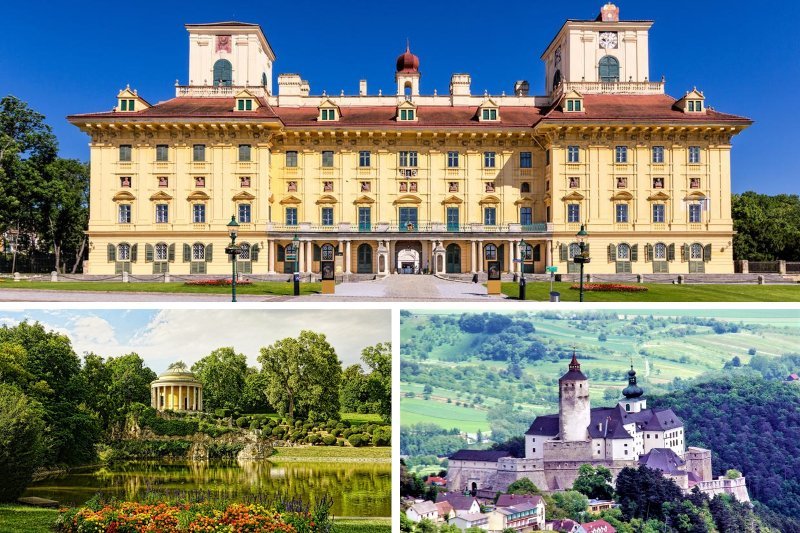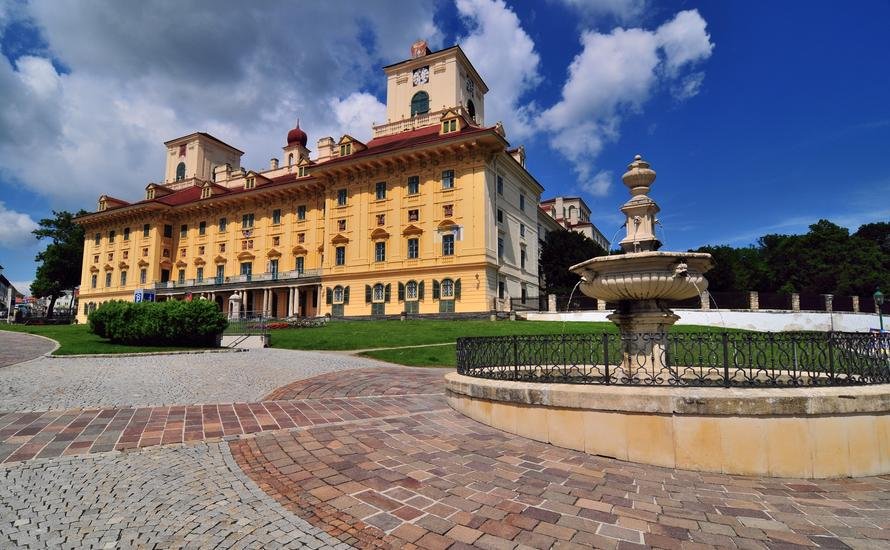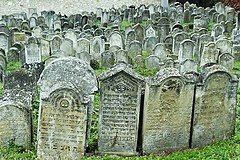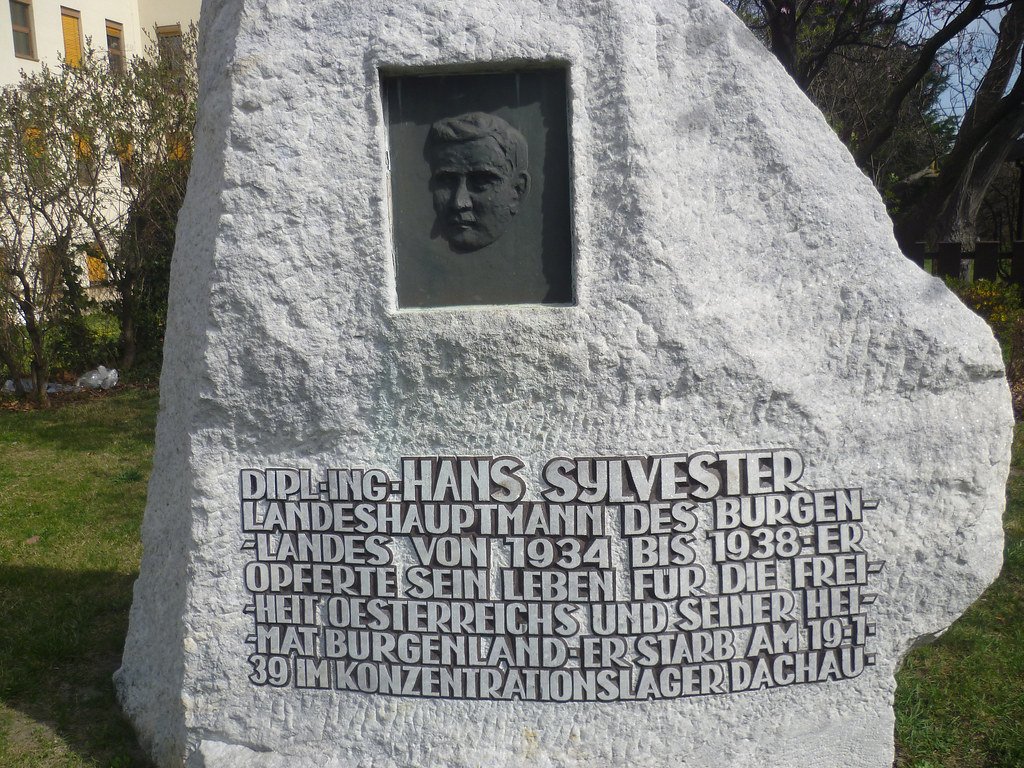Eisenstadt is a statutory city in eastern Austria, at the foot of the Litau Mountains, capital of the Burgenland state and the Eisenstadt-Umgebung district, to which the city does not belong. It has 15.7 thousand inhabitants (January 1, 2023). Located in the center of the agricultural region of Burgenland, it is its commercial and service base. The region is dominated by grapevines, sugar beets and tobacco. There is a developed food processing industry and textile industry. The current name and city rights were granted in 1373. The official name of the city is the Royal Free City.

- Esterházy Castle in Eisenstadt – a historic castle in Eisenstadt, approximately 50 km from ViennaThe family nest of the Esterházy family (it remains in their hands to this day, although it also houses many state and local government offices). It was built in the 13th century and has been rebuilt many times since.In 1364, the castle became the property of the Kaniszaya family. In 1445, it was taken over by the Habsburgs, and in 1622 by the Esterházy family.

- Franz Joseph Haydn (born March 31, 1732 in Rohrau, died May 31, 1809 in Vienna) – Austrian composer of classicism, the oldest of the so-called three Viennese classicists, alongside Wolfgang Amadeus Mozart and Ludwig van Beethoven.Joseph Haydn was one of the main representatives of classicist music and one of those who defined the main musical forms (including the symphony) of this era.His works from 1760–1770 are particularly interesting, created in the Sturm und Drang style, which was an avant-garde trend within classicist culture, at the same time being a prelude to romanticism. In Haydn’s music, this was manifested in the use of unusual chords, rare minor keys and unexpected changes of mood.

- St. Martin’s Cathedral in Eisenstadt – the main church of the Eisenstadt diocese in Austria. It is located at Sankt Rochusstrasse. It is the city’s parish church dedicated to St. Martin. The cathedral is located on the site of a chapel that was first mentioned in a document from 1264, which was referred to as “capella Sancti Martini”. The founder and builder of the church that can be admired today was Hans Siebenhirter, who owned the city of Eisenstadt since 1463.

- The Jewish Quarter in Eisenstadt is the former Jewish district (ghetto) in Eisenstadt, the capital of the Austrian province of Burgenland. The district stretches along Unterbergstrasse and Jerusalem Square (Jerusalemplatz) to the west of the historic city centre and the Esterházy Palace.

- Haydn’s Herb Garden – a small vegetable and herb garden in the capital of the Austrian Burgenland – Eisenstadt. Located at Bürgerspitalgasse, about 500 m east of the old town. Joseph Haydn, a figure associated with Eisenstadt for many years, after purchasing a house at Klostergasse (currently J.Haydn-Gasse 21) on May 2, 1766, began looking for a second place that would provide the artist with opportunities for active rest and recreation. Eventually, he purchased a small garden with a wooden house, located outside the city walls, in the area of the hospital. Haydn and his wife mainly grew herbs and flowers in this garden, and also sought peace and respite from the intensive work on compositions. The garden with the house remained in the hands of the Haydns until October 17, 1778.

- Hans Sylvester (born November 10, 1897 in Nickelsdorf, died January 19, 1939 in the Dachau concentration camp) – Austrian politician, president of the Burgenland state in 1934–1938, agronomist and expert in agricultural crops.Hans Sylvester studied from 1916 to 1923 at the University of Agriculture in Vienna. There he became a member of the Catholic student association. From 1918 to March 1919 he served as a notary. After completing his studies, he initially looked after agricultural assets. From 1926 he became the district officer of the state Agricultural Chamber in Mattersburg and Neusiedl am See. In 1927 he became an inspector, and in 1929 director of the Burgenland Agricultural Chamber.From 1927 to 1930 he was a member of the Burgenland Landtag, and from 1930 to 1931 a member of the Austrian Parliament. From 1934 to 1938 he served as President of Burgenland.

- Ross Schwemme garden and park, fountain surrounded by outdoor sculptures.

Additional information. In addition to these centers, it is worth spending some time in the castle park. There are huge meadows to sit on. An insider’s tip is to bring a picnic basket and someone special for a romantic date. The park is quite popular as a place to relax and get back to earth. There are statues, obelisks and hidden ponds to discover on a long walk.
